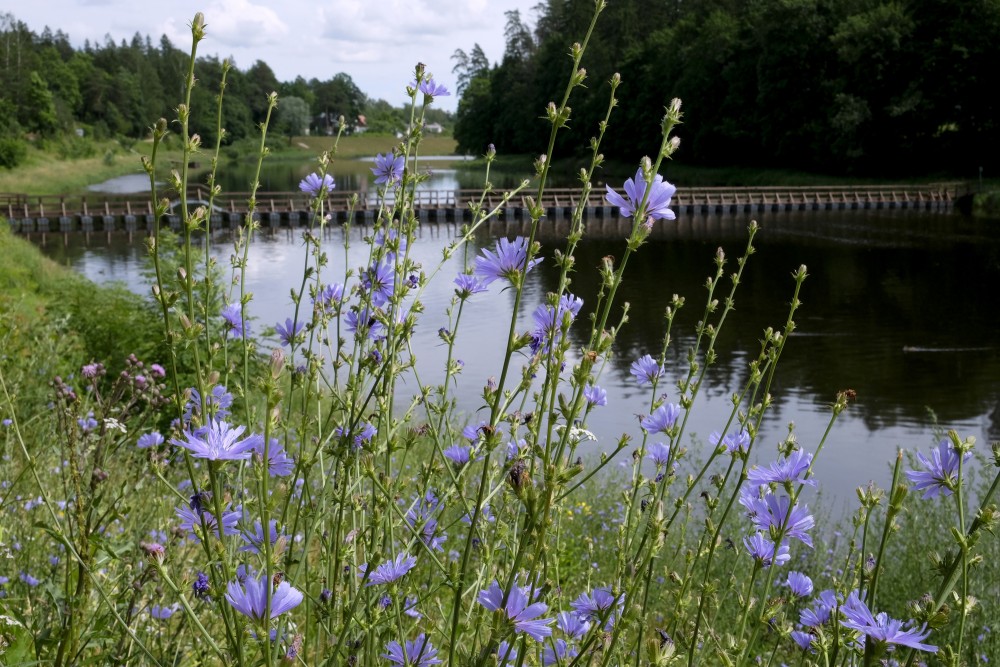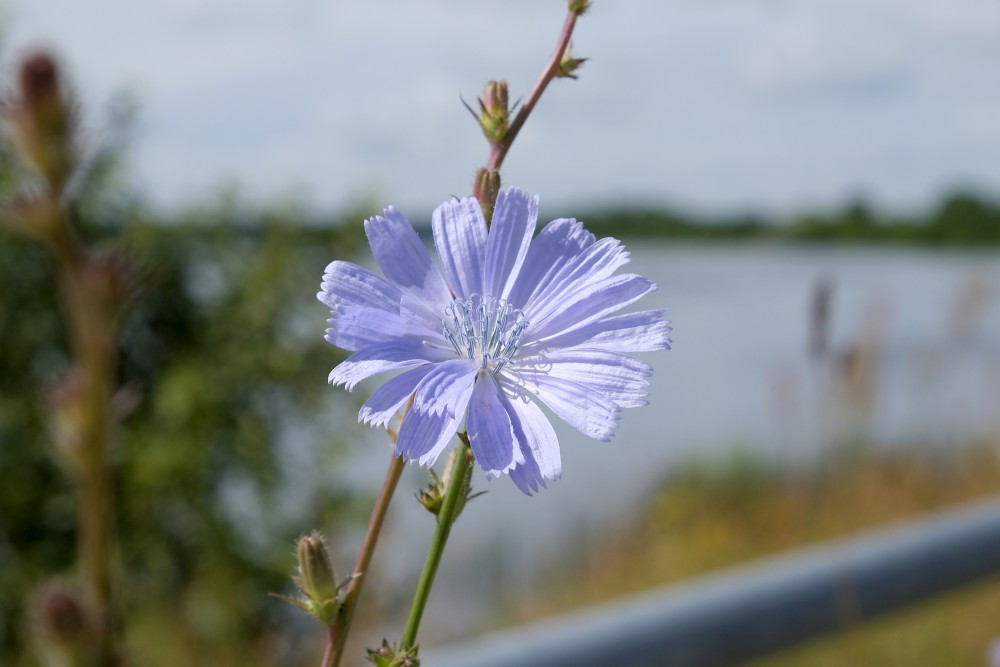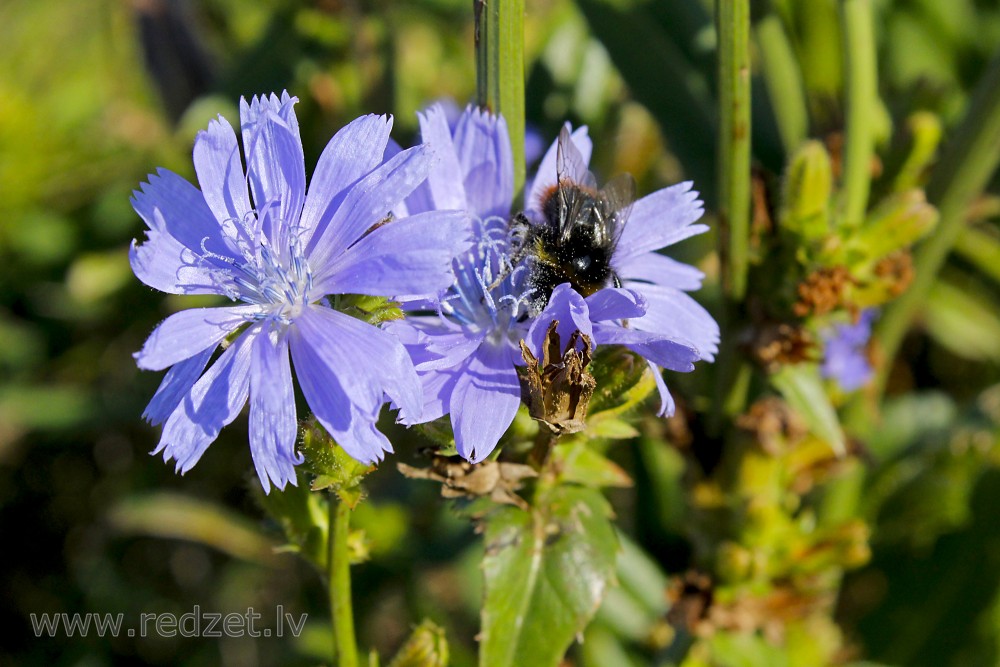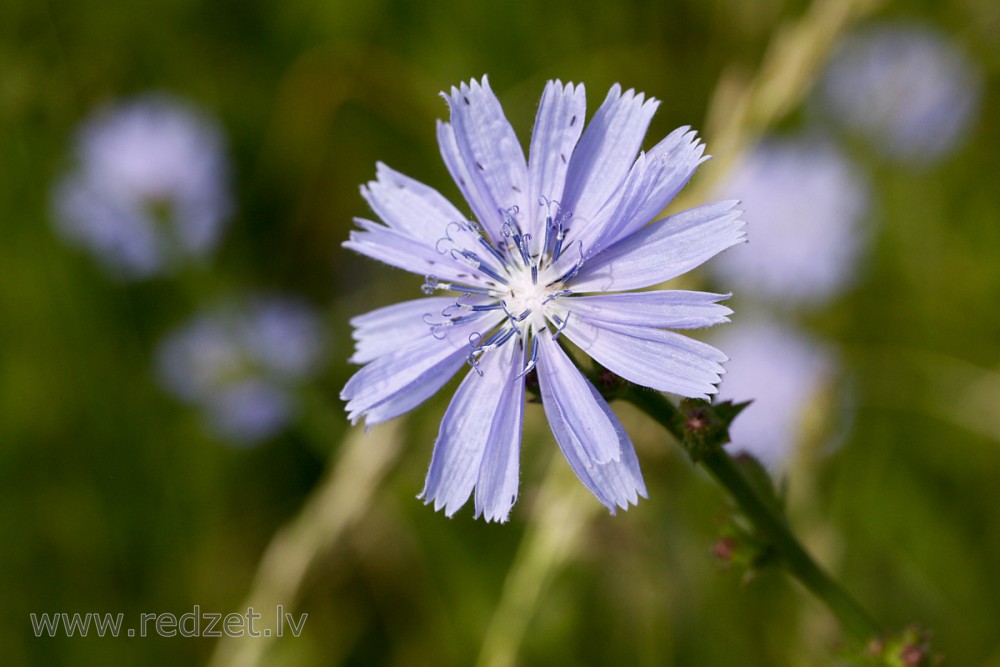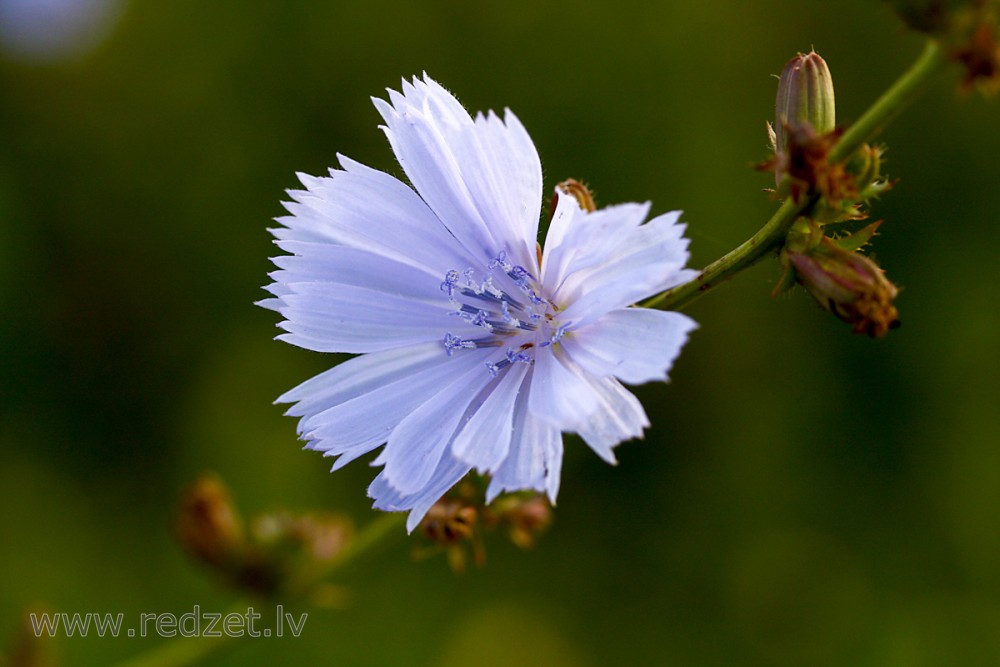Common chicory (Cichorium intybus)
Common chicory, Cichorium intybus, is a somewhat woody, perennial herbaceous plant of the dandelion family Asteraceae, usually with bright blue flowers, rarely white or pink. Many varieties are cultivated for salad leaves, chicons (blanched buds), or roots (var. sativum), which are baked, ground, and used as a coffee substitute and food additive. In the 21st century, inulin, an extract from chicory root, has been used in food manufacturing as a sweetener and source of dietary fiber.
Chicory is grown as a forage crop for livestock. It lives as a wild plant on roadsides in its native Europe, and is now common in North America, China, and Australia, where it has become widely naturalized. "Chicory" is also the common name in the United States for curly endive (Cichorium endivia); these two closely related species are often confused.
Scientific classification
Kingdom: Plantae
Clade: Angiosperms
Clade: Eudicots
Clade: Asterids
Order: Asterales
Family: Asteraceae
Genus: Cichorium
Species: C. intybus
Names
Common chicory is also known as blue daisy, blue dandelion, blue sailors, blue weed, bunk, coffeeweed, cornflower, hendibeh, horseweed, ragged sailors, succory, wild bachelor's buttons, and wild endive. (Note: "Cornflower" is commonly applied to Centaurea cyanus.) Common names for varieties of var. foliosum include endive, radicchio, radichetta, Belgian endive, French endive, red endive, sugarloaf, and witloof (or witlof).
Description
When flowering, chicory has a tough, grooved, and more or less hairy stem, from 30 to 100 cm (10 to 40 in) tall. The leaves are stalked, lanceolate and unlobed. The flower heads are 2 to 4 cm (1⁄4 to 1 1⁄2 inches) wide, and usually light purple or lavender (see picture) and it has been described as light blue, rarely white or pink. Of the two rows of involucral bracts, the inner is longer and erect, the outer is shorter and spreading. It flowers from July until October. The achenes have no pappus (feathery hairs), but do have toothed scales on top.
Culinary uses
Root chicory (Cichorium intybus var. sativum) has been cultivated in Europe as a coffee substitute. The roots are baked, roasted, ground, and used as an additive, especially in the Mediterranean region (where the plant is native). As a coffee additive, it is also mixed in Indian filter coffee, and in parts of Southeast Asia, South Africa, and southern United States, particularly in New Orleans. It has been more widely used during economic crises such as the Great Depression in the 1930s and during World War II in Continental Europe. Chicory, with sugar beet and rye, was used as an ingredient of the East German Mischkaffee (mixed coffee), introduced during the "East German coffee crisis" of 1976-79. It is also added to coffee in Spanish, Greek, Turkish, Syrian, Lebanese and Palestinian cuisines.
Some beer brewers use roasted chicory to add flavor to stouts (commonly expected to have a coffee-like flavour). Others have added it to strong blond Belgian-style ales, to augment the hops, making a witlofbier, from the Dutch name for the plant.
Traditional medicine
Chicory root contains essential oils similar to those found in plants in the related genus Tanacetum.
In traditional medicine, chicory has been listed as one of the 38 plants used to prepare Bach flower remedies. According to Cancer Research UK, "essence therapists believe that using essences can help to increase your mental, emotional and spiritual wellbeing ... Essences are not used to prevent, control, or cure cancer or any other physical condition."
en.wikipedia.org

